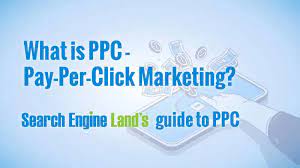Digital Advertising Pricing: Understanding the Costs
In today’s digital age, advertising has shifted significantly towards online platforms, offering businesses new and exciting ways to reach their target audience. Digital advertising pricing can vary greatly depending on a range of factors, making it essential for businesses to understand the costs involved.
Factors Influencing Digital Advertising Pricing
Several key factors can influence the pricing of digital advertising:
- Ad Format: Different ad formats such as display ads, video ads, social media ads, and search engine ads come with varying price points based on their effectiveness and reach.
- Target Audience: The more specific and niche your target audience is, the higher the cost of reaching them through digital advertising due to increased competition.
- Platform: Popular platforms like Google Ads, Facebook Ads, and Instagram Ads have different pricing structures based on factors like ad placement and bidding strategies.
- Ad Placement: The placement of your ads on websites or social media feeds can impact pricing, with prime locations commanding higher rates.
- Campaign Objectives: Whether you aim to increase brand awareness, drive website traffic, or generate leads can affect the overall cost of your digital advertising campaign.
Understanding Cost Models
Digital advertising pricing is often based on various cost models:
- Cost Per Click (CPC): Advertisers pay each time a user clicks on their ad.
- Cost Per Mille (CPM): Advertisers pay per thousand impressions of their ad.
- Cost Per Acquisition (CPA): Advertisers pay when a specific action is completed, such as a purchase or sign-up.
- Flat Rate: Advertisers pay a fixed amount for a set period of time or number of impressions regardless of performance metrics.
Tips for Managing Digital Advertising Costs
To make the most of your digital advertising budget, consider the following tips:
- Set Clear Goals: Define your campaign objectives to ensure you allocate your budget effectively.
- A/B Testing: Test different ad creatives, targeting options, and messaging to optimise performance and reduce costs.
- Budget Monitoring: Regularly monitor your campaign performance and adjust budgets based on what is working best.
Understanding Digital Advertising Costs: Key FAQs and Strategies for Effective Budgeting
- What factors influence the pricing of digital advertising?
- How do different ad formats affect the cost of digital advertising?
- What are the typical cost models used in digital advertising pricing?
- How can I effectively target my audience without overspending on digital ads?
- Are there any strategies to reduce digital advertising costs while maintaining effectiveness?
- Can you provide tips for budgeting and managing expenses for a digital advertising campaign?
What factors influence the pricing of digital advertising?
One frequently asked question in the realm of digital advertising pricing is: “What factors influence the pricing of digital advertising?” The pricing of digital advertising is influenced by several key factors that businesses need to consider when planning their marketing budgets. These factors include the ad format being used, the specificity and size of the target audience, the chosen platform for advertising, the placement of ads, and the overall campaign objectives. Understanding these influencing factors is crucial for businesses looking to maximise their return on investment and effectively reach their desired audience in the competitive digital landscape.
How do different ad formats affect the cost of digital advertising?
The choice of ad format plays a significant role in determining the cost of digital advertising. Different ad formats, such as display ads, video ads, social media ads, and search engine ads, come with varying price points based on their effectiveness and reach. For example, video ads tend to be more expensive due to their engaging nature and higher production costs, while display ads may offer a more budget-friendly option for businesses looking to increase brand visibility. Understanding how each ad format aligns with your campaign objectives and target audience can help you make informed decisions that maximise the impact of your digital advertising investment.
What are the typical cost models used in digital advertising pricing?
One frequently asked question in the realm of digital advertising pricing is, “What are the typical cost models used in digital advertising pricing?” Digital advertising pricing commonly revolves around several key cost models, including Cost Per Click (CPC), where advertisers pay for each click on their ad; Cost Per Mille (CPM), where advertisers pay per thousand impressions of their ad; Cost Per Acquisition (CPA), where advertisers pay for specific actions like purchases or sign-ups; and Flat Rate pricing, where advertisers pay a fixed amount for a set period or number of impressions regardless of performance metrics. Understanding these cost models is crucial for businesses looking to effectively manage their digital advertising budgets and maximise their return on investment.
How can I effectively target my audience without overspending on digital ads?
When it comes to effectively targeting your audience without overspending on digital ads, strategic planning and careful execution are key. Begin by clearly defining your target audience based on demographics, interests, and online behaviour. Utilise tools such as Google Analytics and social media insights to gather data that informs your targeting decisions. Implement precise targeting options offered by digital advertising platforms to reach the right audience without unnecessary spending. A/B testing can help you refine your targeting strategy by identifying what resonates best with your audience. Regularly monitor the performance of your ads and adjust your targeting parameters to optimise results while keeping costs in check. By continuously evaluating and refining your targeting approach, you can effectively reach your audience without exceeding your digital advertising budget.
Are there any strategies to reduce digital advertising costs while maintaining effectiveness?
One frequently asked question in digital advertising pricing is whether there are strategies to reduce costs while maintaining effectiveness. Businesses often seek ways to maximise their advertising budget without compromising on the impact of their campaigns. To achieve this, several cost-saving strategies can be implemented, such as refining target audience segmentation to focus on high-converting demographics, optimising ad creatives for better engagement and click-through rates, leveraging data analytics to identify and eliminate underperforming ads or channels, and continuously monitoring and adjusting campaign performance based on real-time data insights. By adopting these strategic approaches, businesses can effectively reduce digital advertising costs while still achieving their desired marketing outcomes.
Can you provide tips for budgeting and managing expenses for a digital advertising campaign?
When it comes to budgeting and managing expenses for a digital advertising campaign, there are several key tips to keep in mind. Firstly, it is crucial to set clear and achievable campaign goals to guide your budget allocation effectively. Conducting thorough research on your target audience and choosing the right ad formats and platforms can help maximise your return on investment. Regularly monitoring your campaign performance, conducting A/B testing, and adjusting budgets based on real-time data analysis are essential strategies for optimising your digital advertising spend. By staying flexible, monitoring results closely, and continuously refining your approach, you can ensure that your digital advertising campaign remains cost-effective and delivers the desired outcomes.



